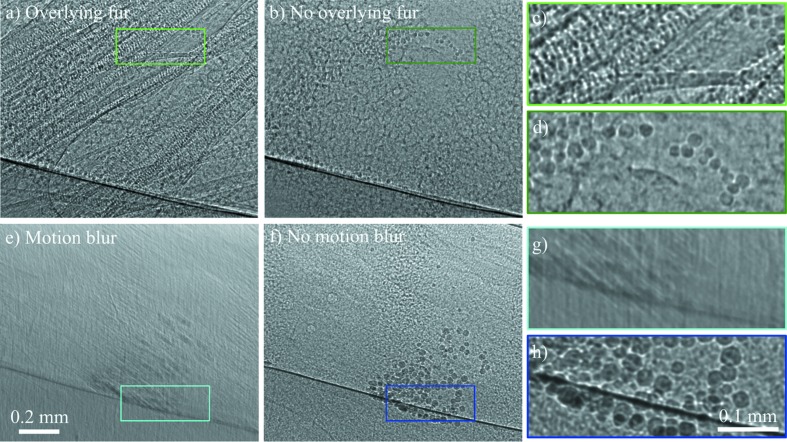Figure 4.
The surface of the trachea of a rat with instilled particles (for mucociliary clearance tracking), demonstrating the detrimental effects of motion blur and overlying structures such as fur when imaging at high resolution. Each artefact makes it impossible to resolve individual particles. (a) Stray fur from another part of the rat obstructs the field of view (where the fur has actually been removed), compared with (b) a clear image when the fur has been combed away from the field of view. 25 ms exposures. Panels (c) and (d) show magnified sections of (a) and (b), respectively. Note that some beads have moved during the 2 min taken to comb/smooth the fur away from the field of view. (e) Motion blur of around 20 µm during a 50 ms exposure compared with (f) a sharp image taken less than 2 s later, again with a 50 ms exposure, but with the image capture synchronized to the stationary part of the breath cycle. Panels (g) and (h) show magnified sections of (e) and (f) respectively. All images were taken with 25 keV synchrotron X-rays from BL20XU at the SPring-8 synchrotron.

